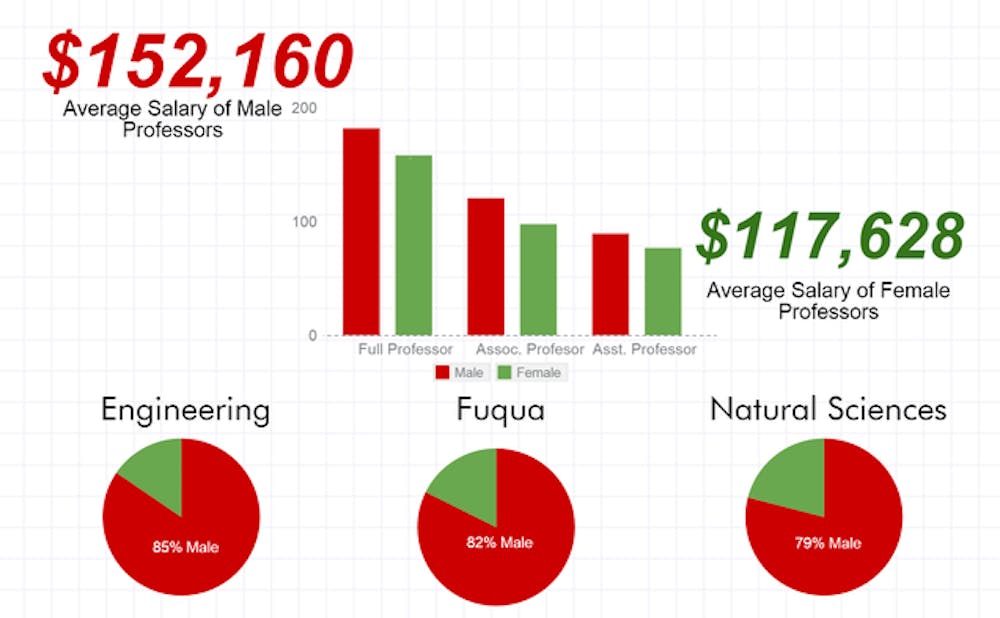The underrepresentation of female faculty in STEM fields is a national issue, not just a Duke problem.
Female professors in the natural science and engineering departments at Duke represent 15 and 21 percent of faculty—figures on par with peer institutions. The most recent reports available indicate that women in the engineering schools at Harvard and Stanford, for example, make up 20.8 and 15 percent of tenure-track faculty, respectively.
Partially as a result of their underrepresentation in science, engineering and business departments—which tend to be higher paying—the average female tenure track professor at Duke is paid $34,532 less than the average male tenure track professor over the course of a nine-month contract, The Chronicle reported last month. This gender gap can be explained in part by social constructs and public conceptions of the academic world, Duke professors say.
"I remember when I first started my faculty position at Duke," biology professor Susan Alberts said. "There were so many female young graduate students knocking on my door, and the question that they had was; 'Is it possible to have a top academic position at a top research institution, and have a family?'
The leaky pipeline
Women earn 41 percent of Ph.D.’s in STEM fields, but make up only 28 percent of tenure-track faculty in those fields, according to a 2013 report by the White House, which has made increasing the representation of women and girls in STEM fields a priority.
This decreasing presence of women in higher levels of academia—often called "the leaky pipeline"—makes recruiting women in STEM a challenge, said Lindsey Glickfeld, assistant professor of neurobiology in the Duke Institute for Brain Sciences.
Glickfeld said that having been on several search committees, she knows that recruiting women is a "high priority." But she noted that of the applications the committees typically received, as few as 30 percent were from women.
The question of how to maintain women's presence in STEM fields is not a new one, Alberts said, also noting that the problem does not have a simple solution.
"The question is where and why is the pipeline leaking," Alberts said. "It's the million dollar question here."
Social constructs
Childbearing, maternity leave and family commitments are among the top concerns women have when considering whether they want to pursue a tenured faculty position in science, Alberts said.
She noted that such a position limits one's ability to take care of parents and grandparents or spend time with children.
"There is just isn't enough flexibility in academia to be a stay-home parent for a couple of years," she said.
Alberts said, though, that some of these limitations and restrictions come from societal expectations for women—noting that society still expects women to be the primary person focused on domestic duties.
For future improvement
Faculty gender diversity has improved markedly in the past 15 years, Alberts noted, but improvements can still be made. Instead of having parental leave and tenure clock relief being optional, for example, she suggested that Duke should make them mandatory.
Currently, Duke grants all faculty a one-semester paternal and maternal leave with pay. For female faculty on the tenure track, the tenure clock relief allows a temporary delay of the research process.
"[These optional policies] give some people the chance to say, 'Oh well, she chose to stop or quit,'" Alberts said. "These structural things place female faculty in a dilemma."
Alberts and Glickfeld both emphasized the importance of role-models in encouraging more females to go into academia.
"This is the critical mass problem," Alberts said. "You have to have enough people who are taking on the role you are taking on, doing it, for you to say for yourself: 'Oh, I can do that!'"
Get The Chronicle straight to your inbox
Signup for our weekly newsletter. Cancel at any time.

